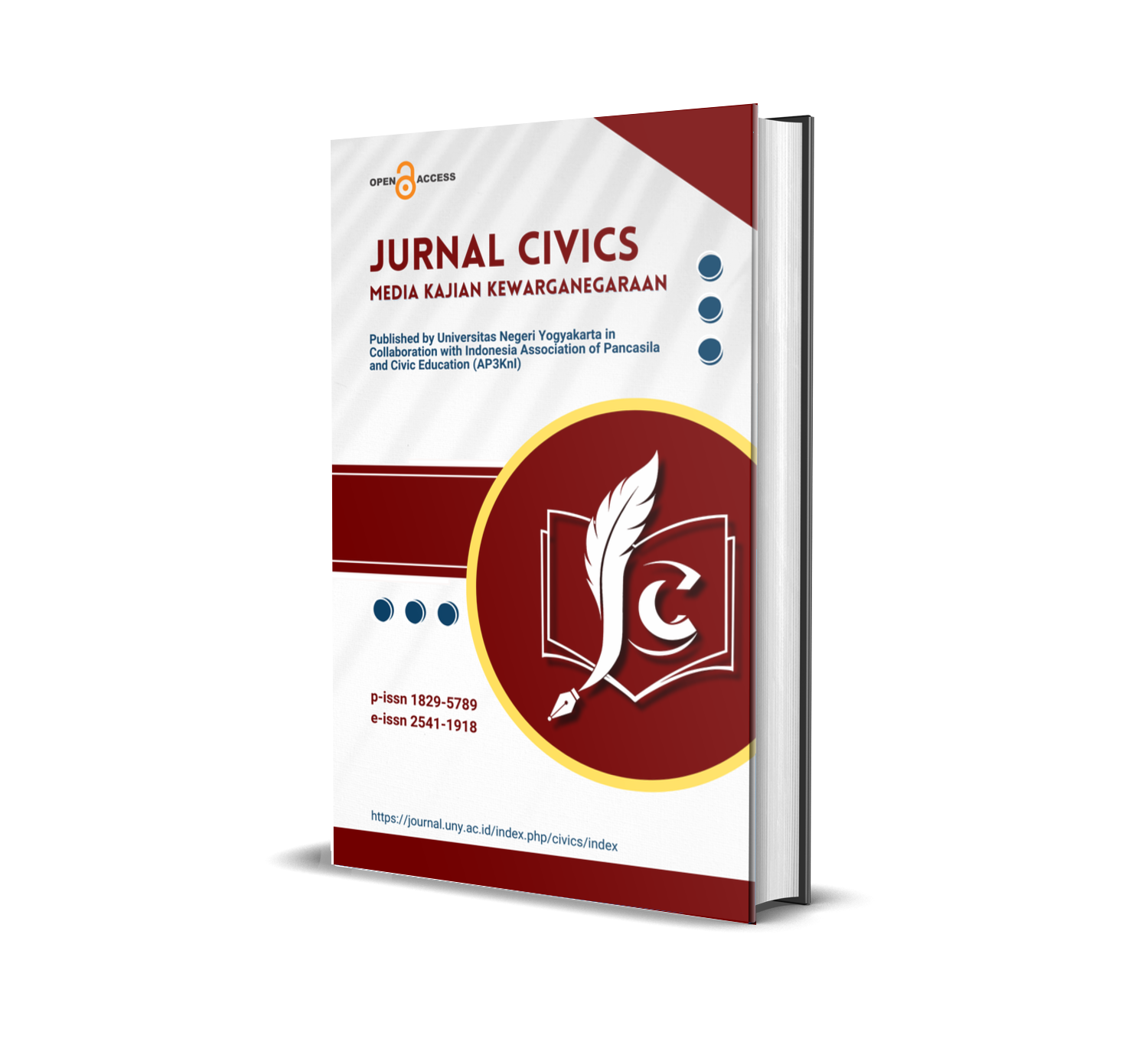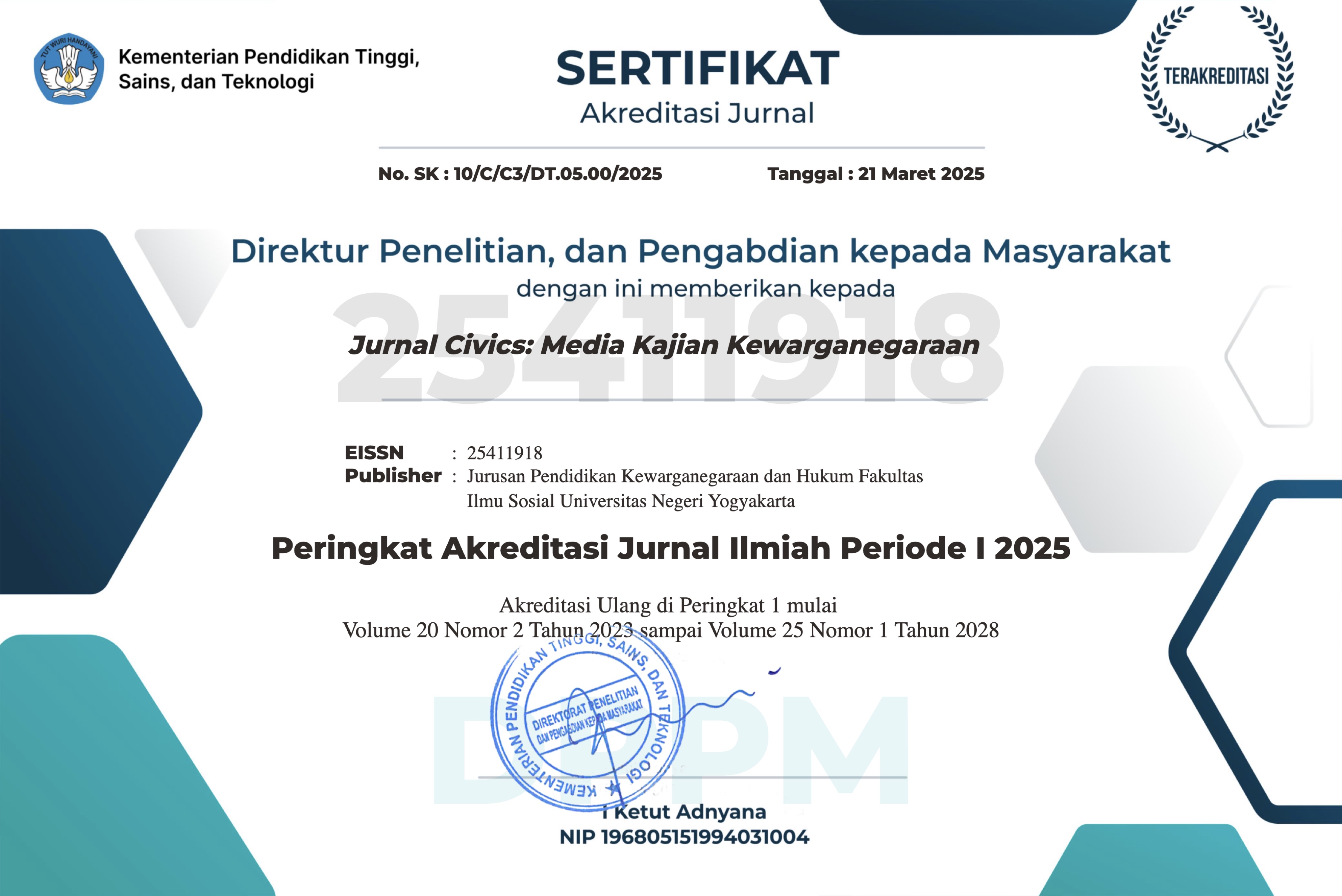Pemberdayaan penyandang disabilitas pada objek wisata Kuta Bali
DOI:
https://doi.org/10.21831/jc.v16i1.22000Keywords:
disabilitas, Bali, pemberdayaanAbstract
Penelitian ini mengkaji tentang jenis penyandang disabilitas dan bentuk pemberdayaan penyandang disabilitas pada objek wisata Kuta, Kabupaten Badung, Provinsi Bali. Masalah ini dianalisis secara kualitatif dengan pendekatan kajian budaya serta dikaji menggunakan teori hegemoni dan praktik sosial. Hasil penelitian menunjukkan: (1) jenis penyandang disabilitas yang diberdayakan pada objek wisata Kuta yaitu tunanetra dan dan tunadaksa; (2) bentuk pemberdayaan penyandang disabilitas yaitu cleaning service, tukang masak, operator CCTV, dan penjual pulsa keliling; (3) penyandang disabilitas kurang diberdayakan pada objek wisata Kuta, sehingga mereka menjadi kelompok yang termarginalkan dan terhegemoni ditengah geliat industri pariwisata. Pemerintah, pengusaha, dan masyarakat diharapkan agar memberdayakan penyandang disabilitas secara maksimal agar mereka memperoleh pekerjaan yang layak untuk keberlanjutan kehidupannya.
---------------------------------------------------------------------------
This study examines what types of people with disabilities and how to empower people with disabilities in the tourist attraction of Kuta, Badung Regency, Bali Province? This problem is analyzed qualitatively with a cultural study approach and examined using the theory of hegemony and social practice. The results of the study showed: (1) types of persons with disabilities who were empowered in Kuta's tourist objects, namely blind and disabled people; (2) forms of empowerment namely cleaning service, cooks, CCTV operators, and mobile credit sellers; (3) people with disabilities are less empowered in Kuta tourism objects, so they become the marginal group and hegemony in the midst of the stretch of the tourism industry. The government, employers, and the community are expected to empower persons with disabilities to the fullest so that they get decent jobs for the sustainability of their.
References
Adioetomo, S. M., Daniel Mont, & Irwanto. (2016). Penyandang disabilitas di Indonesia: Fakta empiris dan implikasi untuk kebijakan perlindungan sosial. Jakarta. Diambil dari http://www.asbindonesia.org/main/front/images/img_media
/Penyandang Disabilitas di Indonesia_Fakta Empiris untuk Kebijakan Perlindungan Sosial (Bahasa Indonesia).pdf
Badungkab. (2015). Penyerahan bantuan 30 kursi roda dan 120 alat bantu dengar di Badung. Diambil 19 Mei 2019, dari http://badungkab.go.id/baca-berita/904/Penyerahan-Bantuan-30-Kursi-Roda-dan-120-Alat-Bantu-Dengar-Di-Badung.html
Barker, C. (2005). Cultural studies: teori dan praktik. Yogyakarta: Bentang.
Barker, C. (2014). Kamus Kajian budaya. Yogyakarta: Kanisius.
Barnes, C., & Mercer, G. (2010). Exploring disability (2 ed.). Cambridge: Polity Press.
BPS Kabupaten Badung. (2015). Analisis hasil SUPAS Kabupaten Badung Tahun 2015. Badung.
Budiana, D. (2017). Upaya emansipasi kaum difabel melalui seni di Kabupaten Gianyar Bali. Universitas Udayana.
Chadha, E. (2005). Running on empty: The not so special status of paratransit services in Ontario. Windsor Rev. Legal & Soc. Issues, 20, 1.
Dinas Sosial Kabupaten Badung. (2017). Data Penyandang Masalah Kesejahteraan Sosial (PMKS) dan Potensi Sumber Kesejahteraan Sosial (PSKS) di Kabupaten Badung tahun 2017. Bali.
French, S., & Swain, J. (2012). Working with disabled people in policy and practice : a social model. Palgrave Macmillan. Diambil dari http://nrl.northumbria.ac.uk/4008/
Halimah, L., & Anisah, A. (2018). Internalisasi nilai pendidikan kewarganegaraan pada tradisi pesta laut blanakan dalam rangka pengembangan ideal democratic citizen. Jurnal Civics: Media Kajian Kewarganegaraan, 15(2), 148–160.
Hallahan, D. P., & Kauffman, J. M. (2006). Exceptional Learners: Introduction to special education (10 ed.). Boston: Pearson.
Iudici, A., Favaretto, G., & Turchi, G. P. (2019). Community perspective: How volunteers, professionals, families and the general population construct disability: Social, clinical and health implications. Disability and Health Journal, 12(2), 171–179. https://doi.org/10.1016/j.dhjo.2018.11.014
Kerlinger, F. N. (2006). Asas-asas penelitian behavioral (3 ed.). Yogyakarta: UGM Press.
Kompas. (2016). Indonesia rebut medali pertama Paralimpik 2016. Diambil 18 Mei 2019, dari https://olahraga.kompas.com/read/2016/09/09/17372061/indonesia.rebut.medali.pertama.paralimpik.2016
Moleong, L. J. (2010). Metode penelitian kualitatif. Bandung: PT. Remaja Rosdakarya.
Ontario Human Rights Commission. (2002). Human rights and public transit services in Ontario: consultation report. Toronto: Ontario Human Rights Commission.
Pratiwi, I., & Hartosujono, H. (2018). Resiliensi pada penyandang tuna daksa non bawaan. Jurnal Spirits, 5(1), 48. https://doi.org/10.30738/spirits.v5i1.1057
Priatna, E. (2003). Emansipasi intelektual menurut Jurgen Habermas. Bandung: Katarsis.
Putra, I. K. A. S., & Adhi, K. T. (2014). Status gizi penyandang cacat (tunagrahita dan tunarungu) di Sekolah Luar Biasa B Negeri Pembina Tingkat Nasional Kelurahan Jimbaran Kabupaten Badung. Community Heatlh, II(1), 32–41. https://doi.org/10.2105/AJPH.40.6.755-a
Singarimbun, M., & Effendi, S. (1989). Metodologi penelitian survei. Jakarta: LP3ES.
Suwardi, E. (2006). Metode, teori, teknik penelitian kebudayaan: Ideologi, epistemologi, dan Aplikasi. Yogyakarta: Pustaka Widyatama.
Downloads
Published
How to Cite
Issue
Section
Citation Check
License
The authors agree to transfer the transfer copyright of the article to The Jurnal Civics: Media Kajian Kewarganegaraan effective if and when the paper is accepted for publication.
Authors and other parties are bound to the Creative Commons Attribution-NonCommercial-ShareAlike 4.0 International License for the published articles, legal formal aspect of journal publication accessibility refers to Creative Commons Attribution-NonCommercial-ShareAlike 4.0 International License (CC BY-NC-SA).










